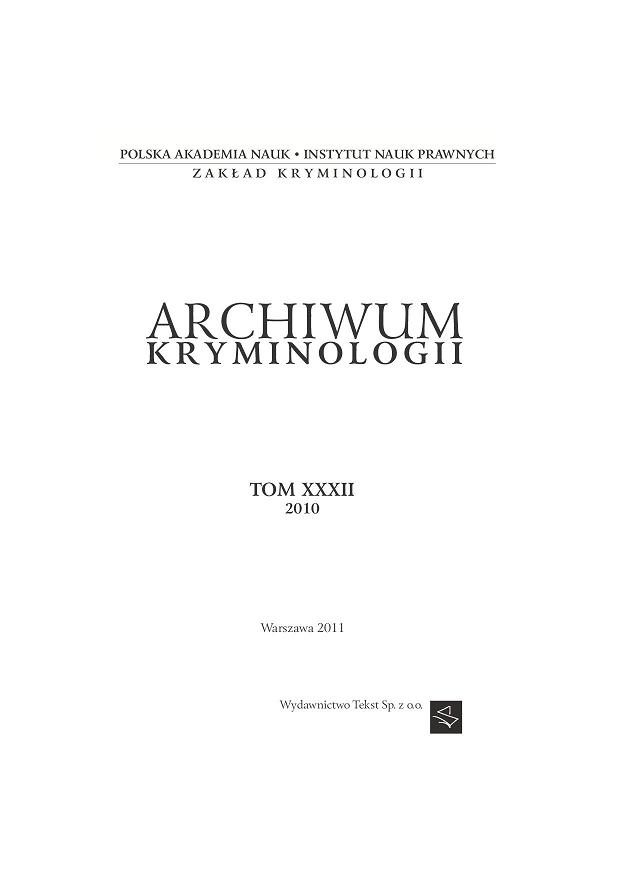Modele kurateli sądowej po roku 2001 w świetle badań empirycznych
Models of court guardianship after 2001 in the light of empirical data
Author(s): Piotr StępniakSubject(s): Law, Constitution, Jurisprudence
Published by: Instytut Nauk Prawnych PAN
Keywords: PROBATION; PROBATION OFFICERS;
Summary/Abstract: The article discusses the question about a functional model of family guardianship, shaped in practice by provisions of act of 27 July 2001 on court guardians and probation officers. It has been eight years since the act was passed. It is a time long enough to critically review how provisions of the said act function in practice and to evaluate if they have a positive influence on the model of family guardianship. While formulating assumptions to the empirical study of these problems, it was accepted that the model of guardianship can be determined by the method of guardians’ work. The method varies according to if a guardian is a professional guardian or a social worker. The method is also determined by the personal characteristics of a minor, their family situation and environment. The way of supervision over minors is another factor determining a guardian’s work. Polish guardianship is partly professional and partly social service . It results from the act of 27 July 2001 on court guardians and probation officers. Verification how the model assumptions are realised in practice was the first stage of the research. Subsequent stages included research on differences in task performance by professional and social guardians, and in the way of supervision. The study was conducted between March 2008 and November 2009. Guarded minors, their parents were questioned in a questionnaire, guardians themselves were interview. Moreover, court files of guardianships in question were examined. 292 questionnaires were distributed among randomly selected minors supervised by guardians from District Court in Poznań. Out the number of questionnaires 225 could be used. Court files of the minors who returned their questionnaires were examined. The study included 102 professional and 123 social guardians. Data obtained from questionnaires were verified against 45 interviews with professional and 50 social guardians from the District Court in Poznań. The final stage was statistical analysis of the obtained results. The analysis of the professional / social model of guardianship was based on statistics and official documents. They prove that the model, contrary to premises of the act of 27 July 2001 is still rather a social / professional one. As of the end of 2008, there were 2,726 professional and 13,428 social guardians. In the light of the above, it was interesting to compare the methods of work of both groups, particularly methods of their supervision. The comparison can be summarised as follows: 1. Analysis of time spent over activities and the proportion of supervision of minors in the total work time leads to a conclusion that no activity was a predominant one in either of the groups. Guardians’ work cannot be categorised as exclusively educational, controlling, assisting or administrational, it has rather a mixed character.
Journal: Archiwum Kryminologii
- Issue Year: 2010
- Issue No: XXXII
- Page Range: 157-204
- Page Count: 48
- Language: Polish

